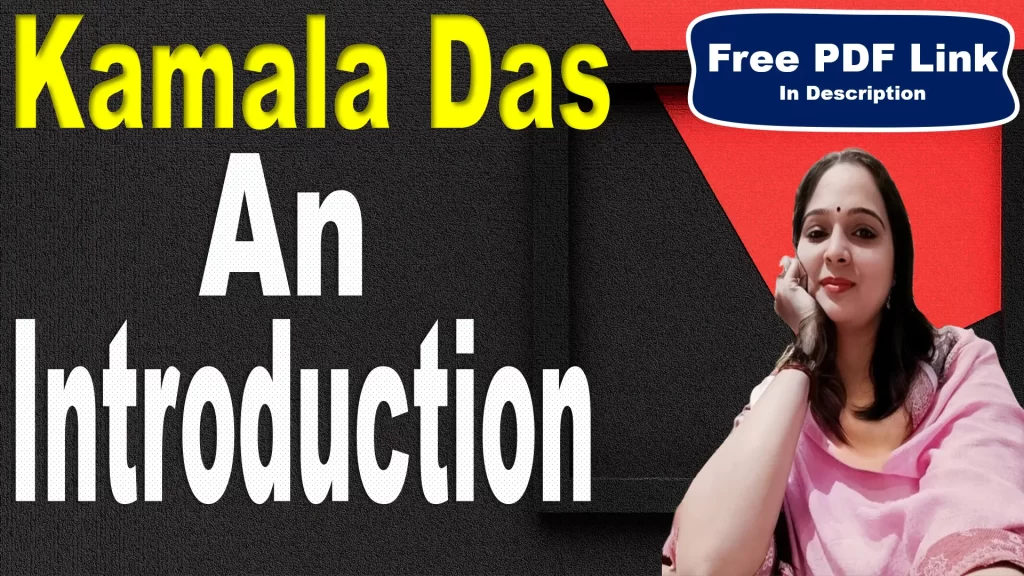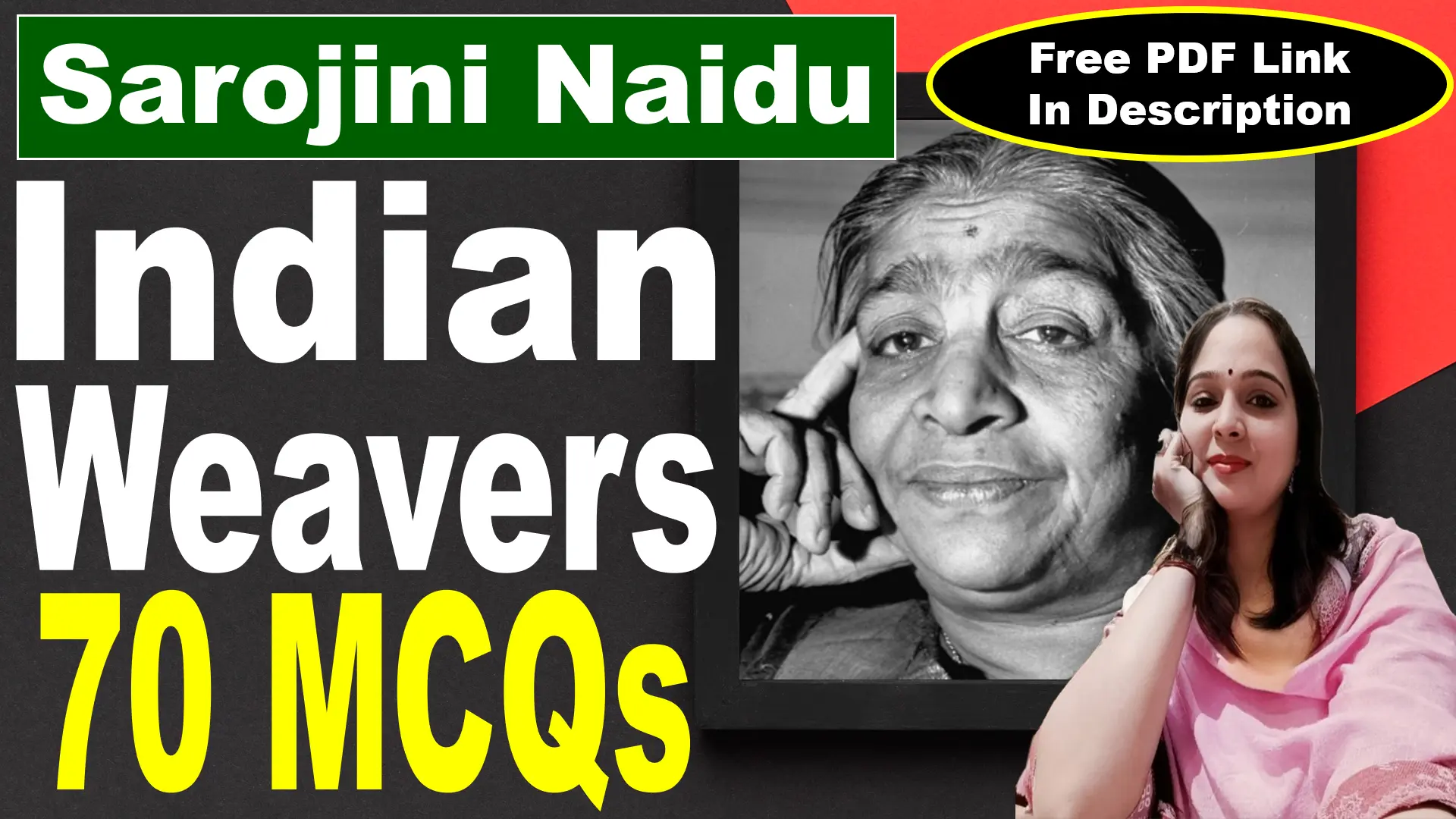
I don’t know politics but I know the names
Of those in power, and can repeat them like
Days of week, or names of months, beginning with Nehru.
I am Indian, very brown, born in Malabar,
I speak three languages, write in
Two, dream in one.
Don’t write in English, they said, English is
Not your mother-tongue. Why not leave
Me alone, critics, friends, visiting cousins,
Every one of you? Why not let me speak in
Any language I like? The language I speak,
Becomes mine, its distortions, its queernesses
All mine, mine alone.
It is half English, half Indian, funny perhaps, but it is honest,
It is as human as I am human, don’t
You see? It voices my joys, my longings, my
Hopes, and it is useful to me as cawing
Is to crows or roaring to the lions, it
Is human speech, the speech of the mind that is
Here and not there, a mind that sees and hears and
Is aware. Not the deaf, blind speech
Of trees in storm or of monsoon clouds or of rain or the
Incoherent mutterings of the blazing
Funeral pyre. I was child, and later they
Told me I grew, for I became tall, my limbs
Swelled and one or two places sprouted hair.
When I asked for love, not knowing what else to ask
For, he drew a youth of sixteen into the
Bedroom and closed the door, He did not beat me
But my sad woman-body felt so beaten.
The weight of my breasts and womb crushed me.
I shrank Pitifully.
Then … I wore a shirt and my
Brother’s trousers, cut my hair short and ignored
My womanliness. Dress in sarees, be girl
Be wife, they said. Be embroiderer, be cook,
Be a quarreller with servants. Fit in. Oh,
Belong, cried the categorizers. Don’t sit
On walls or peep in through our lace-draped windows.
Be Amy, or be Kamala. Or, better
Still, be Madhavikutty. It is time to
Choose a name, a role. Don’t play pretending games.
Don’t play at schizophrenia or be a
Nympho. Don’t cry embarrassingly loud when
Jilted in love … I met a man, loved him. Call
Him not by any name, he is every man
Who wants. a woman, just as I am every
Woman who seeks love. In him… the hungry haste
Of rivers, in me… the oceans’ tireless
Waiting. Who are you, I ask each and everyone,
The answer is, it is I. Anywhere and,
Everywhere, I see the one who calls himself I
In this world, he is tightly packed like the
Sword in its sheath. It is I who drink lonely
Drinks at twelve, midnight, in hotels of strange towns,
It is I who laugh, it is I who make love
And then, feel shame, it is I who lie dying
With a rattle in my throat. I am sinner,
I am saint. I am the beloved and the
Betrayed. I have no joys that are not yours, no
Aches which are not yours. I too call myself I.
An Introduction by Kamala Das: Video Explanation
An Introduction by Kamala Das Analysis
I don’t know politics but I know the names
I don’t know politics but I know the names
Of those in power, and can repeat them like
Days of week, or names of months, beginning with Nehru.
I am Indian, very brown, born in Malabar,
I speak three languages, write in
Two, dream in one.
Don’t write in English, they said, English is
Not your mother-tongue. Why not leave
Me alone, critics, friends, visiting cousins,
Every one of you? Why not let me speak in
Any language I like? The language I speak,
Becomes mine, its distortions, its queernesses
All mine, mine alone.
Reference to Context
These lines are taken from the poem An Introduction by Kamala Das, which was published in her poetry collection Summer in Calcutta (1965). The poem is autobiographical and expresses the poet’s thoughts on identity, language, gender roles, and self-expression. Here, Kamala Das talks about how she may not understand politics, but she is familiar with the names of political leaders, starting from Jawaharlal Nehru. She also discusses her multilingual identity and responds to criticism about her writing in English, a language that was often considered foreign to Indian writers.
Explanation
The poet begins by admitting that she does not understand politics but knows the names of those in power. This suggests that she is aware of the political landscape but does not actively engage in it. She compares these names to the days of the week or months of the year, emphasizing that they are simply memorized facts, not something deeply meaningful to her.
She then declares her Indian identity by stating that she is “very brown” and born in Malabar (a region in Kerala, India). This assertion reflects her pride in her roots. She goes on to describe her multilingual ability—she speaks three languages, writes in two, and dreams in one. This line highlights the complex linguistic diversity that many Indians experience, where they communicate in multiple languages but have one dominant language in their thoughts.
However, she faces criticism for writing in English, as people tell her that English is not her mother tongue. This reflects the postcolonial tension in India, where English was often seen as a language of the colonizers, and many believed that Indian writers should write in their native languages. Kamala Das strongly rejects this idea, questioning why people cannot let her express herself in the language of her choice.
She defends her personal style of English, saying that even if it has distortions and oddities, it still belongs to her. She embraces the imperfections of her language, asserting that it is unique to her and represents her individuality. This section highlights freedom of expression, breaking traditional boundaries of language and culture.
Poetic devices:
Repetition: “I don’t know politics but I know the names” – This repetition emphasizes the contrast between knowledge of political figures and actual political awareness.
Simile: “Like days of week, or names of months” – Comparing the memorization of political leaders’ names to the days of the week and months shows how superficial and routine this knowledge is.
Alliteration: “Critics, friends, visiting cousins” – The repetition of the “c” sound creates a rhythmic effect.
Enjambment: The poem flows from one line to the next without a full stop, creating a conversational and spontaneous tone.
Imagery: “The language I speak, becomes mine, its distortions, its queernesses all mine, mine alone” – This line evokes a sense of ownership over language, making it a personal and emotional expression.
Contrast: The contrast between what society expects (writing in her mother tongue) and her personal choice (writing in English) highlights individual freedom vs. societal norms.
Symbolism: “Three languages, write in two, dream in one” – This symbolizes the multicultural identity of many Indians, where multiple languages coexist, but one language dominates their inner world.
It is half English, half Indian, funny perhaps, but it is honest,
It is as human as I am human, don’t
You see? It voices my joys, my longings, my
Hopes, and it is useful to me as cawing
Is to crows or roaring to the lions, it
Is human speech, the speech of the mind that is
Here and not there, a mind that sees and hears and
Is aware. Not the deaf, blind speech
Of trees in storm or of monsoon clouds or of rain or the
Incoherent mutterings of the blazing
Funeral pyre. I was child, and later they
Told me I grew, for I became tall, my limbs
Swelled and one or two places sprouted hair.
Reference to Context
These lines are from Kamala Das’s poem An Introduction, published in Summer in Calcutta (1965). The poem is deeply personal and explores themes of language, identity, self-expression, and societal expectations. In this section, the poet defends her choice of writing in English, even if it is not her mother tongue. She argues that language is deeply personal and that her version of English, though mixed with Indian elements, is honest and true to her identity.
Explanation
The poet describes her language as “half English, half Indian”, suggesting that it is a blend of cultures, just like her identity. She acknowledges that this mixture might seem “funny” to some, but she insists that it is honest because it reflects her true self. She compares her language to human nature, emphasizing that it is as real as her emotions, thoughts, and experiences.
She further defends her use of language by comparing it to natural communication—just as crows caw and lions roar, she speaks in her unique way. This suggests that language is an instinctive and necessary part of existence. She contrasts her living, expressive speech with the meaningless, unconscious sounds of nature, such as trees in a storm, monsoon clouds, or a blazing funeral pyre. These natural sounds, though dramatic, lack awareness and intention. Through this contrast, she asserts that her language is not just noise—it carries meaning, feelings, and awareness.
The second part of this passage transitions into a discussion of her physical growth from childhood to womanhood. She recalls how people told her she was growing up as she became taller and developed physically. The mention of hair sprouting in places indicates the onset of puberty, marking a transition that society closely monitors, especially in women. This section subtly introduces the theme of how society imposes gender roles and expectations on women as they grow.
Poetic Device:
Contrast: “It is as human as I am human, don’t you see?”
She contrasts her expressive speech with meaningless sounds of nature (“Not the deaf, blind speech of trees in storm or of monsoon clouds”). This highlights the depth and awareness behind human language.
Simile: “It is useful to me as cawing is to crows or roaring to the lions.”
She compares her speech to the instinctive sounds of animals, reinforcing the idea that language is a natural form of self-expression.
Imagery: “The deaf, blind speech of trees in storm or of monsoon clouds or of rain or the incoherent mutterings of the blazing funeral pyre.”
The poet paints a vivid picture of meaningless sounds in nature, contrasting them with her conscious, meaningful speech.
Alliteration: “Swelled and one or two places sprouted hair.”
The repeated “s” sound creates a rhythmic effect, emphasizing the natural process of growth.
Symbolism: “Funeral pyre” – A symbol of death and destruction, suggesting the lifelessness of meaningless speech.
“Cawing of crows, roaring of lions” – Symbols of raw, instinctive expression.
Enjambment: The lines flow without full stops, creating a natural, conversational rhythm that mirrors the poet’s spontaneous and emotional self-expression.
When I asked for love, not knowing what else to ask
For, he drew a youth of sixteen into the
Bedroom and closed the door, He did not beat me
But my sad woman-body felt so beaten.
The weight of my breasts and womb crushed me.
I shrank Pitifully.
Reference to Context
These lines are taken from Kamala Das’s poem An Introduction, published in Summer in Calcutta (1965). The poem is autobiographical and explores identity, gender roles, societal expectations, and personal freedom. In this section, Kamala Das describes a deeply personal and painful experience—her early encounter with marriage and sexuality. She reflects on her emotional and physical suffering as a young woman who did not understand love but was forced into an intimate relationship.
Explanation
The poet recalls a time when she asked for love, not fully understanding what love truly meant. This line suggests innocence and vulnerability, as she was unaware of what to expect from a romantic or marital relationship. Instead of receiving love in its pure, emotional form, she was introduced to a physical relationship in a way that felt oppressive and alienating.
The line “he drew a youth of sixteen into the bedroom and closed the door” suggests that she was married off at a young age, possibly to a husband who was also quite young. The act of “closing the door” symbolizes secrecy, confinement, and the societal expectation that a woman must surrender to her husband’s desires.
Although she clarifies that he did not physically beat her, she still felt emotionally and psychologically beaten. This is because the experience of being in a forced or unfulfilling relationship left her feeling crushed and powerless.
The phrase “The weight of my breasts and womb crushed me” is a powerful metaphor for the burden of womanhood and societal expectations. It suggests that her biological identity as a woman—her ability to bear children and her physical form—felt like a heavy burden rather than something she embraced with joy. This conveys a deep sense of disillusionment with marriage and gender roles, where women are often expected to conform and suffer in silence.
The final line, “I shrank pitifully”, emphasizes her emotional withdrawal and loss of self. She felt diminished, both physically and emotionally, as if she had lost her sense of identity and agency. The word “pitifully” conveys a sense of helplessness and despair, highlighting the pain of a young girl trapped in a role she was not ready for.
Poetic Device:
Enjambment: The lines flow into each other without a full stop, creating a sense of continuity and overwhelming emotion.
Metaphor: “The weight of my breasts and womb crushed me.”
This metaphor symbolizes the burden of being a woman—physically, emotionally, and socially. It represents the expectations placed on women to fulfill traditional roles of wifehood and motherhood.
Imagery: “He drew a youth of sixteen into the bedroom and closed the door.”
This line creates a vivid picture of forced intimacy, evoking feelings of confinement and helplessness.
Contrast: “He did not beat me / But my sad woman-body felt so beaten.”
The contrast between physical violence (which did not occur) and emotional suffering (which was deeply felt) highlights how pain is not only inflicted through physical acts but also through psychological and emotional oppression.
Alliteration: “Shrank pitifully” – The repetition of the “s” sound emphasizes the poet’s emotional retreat and shrinking self-esteem.
Symbolism: “Closed the door” – Symbolizes secrecy, suppression, and lack of freedom.
“Weight of my breasts and womb” – Represents the expectations and burdens of womanhood in a patriarchal society.
Then … I wore a shirt and my
Brother’s trousers, cut my hair short and ignored
My womanliness. Dress in sarees, be girl
Be wife, they said. Be embroiderer, be cook,
Be a quarreller with servants. Fit in. Oh,
Belong, cried the categorizers. Don’t sit
On walls or peep in through our lace-draped windows.
Be Amy, or be Kamala. Or, better
Still, be Madhavikutty. It is time to
Choose a name, a role. Don’t play pretending games.
Don’t play at schizophrenia or be a
Nympho. Don’t cry embarrassingly loud when
Jilted in love … I met a man, loved him.
Reference to Context
These lines are from Kamala Das’s poem An Introduction, published in her collection Summer in Calcutta (1965). The poem is an autobiographical reflection on identity, self-expression, gender roles, and societal expectations. In this passage, the poet discusses her rebellion against traditional gender roles and the pressure society places on women to conform to predefined roles. She describes her rejection of femininity, her struggle to fit in, and the constant judgment she faces from society.
Explanation
After feeling crushed and trapped by societal expectations in her early experiences of love and marriage, Kamala Das chooses to reject traditional notions of womanhood. She expresses this rebellion through her physical appearance and clothing choices:
She wears her brother’s trousers instead of traditional feminine attire.
She cuts her hair short, distancing herself from societal expectations of how a woman should look.
She ignores her womanliness, refusing to conform to patriarchal ideals of femininity.
However, society does not accept this defiance. People around her command her to conform, insisting that she must:
Wear sarees (symbolizing traditional womanhood).
Be a girl, be a wife (indicating that a woman’s role is predefined from birth).
Engage in domestic roles like cooking, embroidery, and even quarreling with servants (which reflects the stereotypical expectations of a housewife).
Society demands that she fit in, forcing her to “belong”, labeling and categorizing her identity. The phrase “Be Amy, or be Kamala. Or, better still, be Madhavikutty” reflects how women are constantly pressured to take on predefined identities rather than being themselves.
Amy could represent a Westernized identity.
Kamala is her given name, associated with tradition.
Madhavikutty is the name she used when writing in Malayalam, showing another layer of societal categorization.
She is mocked for not choosing a single role, told not to “play pretending games”—as if searching for her own identity is something unacceptable. The mention of schizophrenia suggests that society views her struggles with identity as madness, dismissing them instead of understanding her need for personal freedom.
She is also judged for her sexuality and emotions. Society warns her:
“Don’t be a nympho” – suggesting that women should not express desire.
“Don’t cry embarrassingly loud when jilted in love” – implying that women should suffer heartbreak silently.
Despite all of this, she continues to explore love and relationships, meeting a man and loving him. This line marks her persistence in seeking emotional fulfillment despite societal pressures.
Poetic Device:
Symbolism: “Wore a shirt and my brother’s trousers” – Symbolizes her rejection of traditional gender norms and her desire to express herself freely.
“Dress in sarees, be girl, be wife” – Represents society’s rigid expectations of women.
“Don’t sit on walls or peep in through our lace-draped windows.” – Symbolizes how society restricts women’s freedom and limits their ability to explore the world.
Repetition: “Be Amy, or be Kamala. Or, better still, be Madhavikutty.” – The repetition of “be” emphasizes how society forces women into roles rather than letting them define themselves.
“Don’t play… Don’t play…” – Repeated warnings from society reinforce the rigid and restrictive norms imposed on women.
Contrast: “Don’t play at schizophrenia or be a nympho.” – Contrasts mental instability with sexual desire, showing how women are judged regardless of their choices.
“Don’t cry embarrassingly loud when jilted in love.” – Contrasts emotional expression with societal expectations of restraint.
Enjambment: The lines flow naturally without full stops, mirroring the continuous pressure from society and the poet’s internal struggle.
Him not by any name, he is every man
Who wants. a woman, just as I am every
Woman who seeks love. In him… the hungry haste
Of rivers, in me… the oceans’ tireless
Waiting. Who are you, I ask each and everyone,
The answer is, it is I. Anywhere and,
Everywhere, I see the one who calls himself I
In this world, he is tightly packed like the
Sword in its sheath. It is I who drink lonely
Drinks at twelve, midnight, in hotels of strange towns,
It is I who laugh, it is I who make love
And then, feel shame, it is I who lie dying
With a rattle in my throat.
Reference to Context
These lines are taken from An Introduction, a confessional and autobiographical poem by Kamala Das, published in her collection Summer in Calcutta (1965). The poem explores themes of identity, gender roles, love, desire, and self-expression. In this passage, the poet moves beyond personal identity and speaks about universal human experiences of love, longing, desire, loneliness, and mortality.
Explanation
The poet describes a universal relationship between men and women, saying:
“Call him not by any name, he is every man who wants a woman, just as I am every woman who seeks love.”
Here, “he” represents all men”, and “I” represents all women who desire love and companionship.
The lack of a specific name suggests that the dynamics of desire and relationships are universal and not tied to a single person.
“In him… the hungry haste of rivers, in me… the oceans’ tireless waiting.”
This metaphor contrasts male and female desire:
Rivers represent men’s urgent, rushing passion.
Oceans symbolize women’s deep, patient, and enduring longing.
This reflects a traditional view of gendered love, where men are seen as impatient pursuers and women as patient, waiting figures.
The poet then asks “Who are you?” to every person she encounters, and the reply is always “It is I.”
This suggests a sense of shared human identity, breaking down individual differences.
It conveys the idea that all people, regardless of gender or status, experience similar emotions, desires, and struggles.
She further describes:
“I see the one who calls himself I in this world, he is tightly packed like the sword in its sheath.”
The sword in its sheath symbolizes a man’s hidden desires, restrained emotions, or societal expectations that force him to remain controlled.
She then shifts into first-person narration, embracing different aspects of human existence:
“It is I who drink lonely drinks at twelve, midnight, in hotels of strange towns.”
She speaks about loneliness, alienation, and the experience of being alone in unfamiliar places.
“It is I who laugh, it is I who make love, and then, feel shame.”
This line expresses the duality of human experiences—joy, passion, and regret.
The phrase “feel shame” suggests how society judges women for expressing love and desire, making them feel guilt.
“It is I who lie dying with a rattle in my throat.”
This represents the inevitability of death, showing that she identifies with all stages of human life—from desire and love to loneliness and death.
Poetic Device:
Metaphor: “The hungry haste of rivers” (male desire) vs. “the oceans’ tireless waiting” (female patience)
“Sword in its sheath” – Represents repressed desires, masculinity, and self-control.
Anaphora (Repetition at the Beginning of Lines): “It is I who drink… It is I who laugh… It is I who make love… It is I who lie dying…”
This repetition creates a rhythmic, universalizing effect, making the poet’s experiences relatable to all.
Symbolism: “Hotels of strange towns” – Represents alienation and loneliness.
“Midnight drinks” – Symbolizes self-reflection, solitude, and escapism.
“Laughter, love, shame, and death” – Covers the full spectrum of human experience.
Contrast: The poem contrasts men’s urgency (rivers) with women’s patience (oceans).
It also contrasts joy (laughing, making love) with suffering (shame, loneliness, and death).
Enjambment: The lines flow without full stops, creating a natural and conversational tone, reinforcing the poet’s stream of consciousness.
I am sinner,
I am saint. I am the beloved and the
Betrayed. I have no joys that are not yours, no
Aches which are not yours. I too call myself I.
Reference to Context
These lines are taken from the concluding part of Kamala Das’s poem An Introduction, published in her collection Summer in Calcutta (1965). The poem is autobiographical and explores themes of identity, gender roles, societal expectations, love, and self-expression. In these lines, Kamala Das transcends her personal experiences and embraces a universal identity. She declares that she is both sinner and saint, the loved one and the betrayed, emphasizing that human experiences—whether joy or suffering—are shared and universal.
Explanation
“I am sinner, I am saint.”
The poet acknowledges that she embodies contradictions—she is neither wholly good nor wholly bad.
This challenges binary labels imposed by society, where women are often categorized as either pure and virtuous or sinful and rebellious.
“I am the beloved and the betrayed.”
She identifies as both the one who receives love and the one who experiences heartbreak.
This suggests that love and betrayal are inevitable parts of human life, and one cannot exist without the other.
“I have no joys that are not yours, no aches which are not yours.”
This line expresses a deep sense of universality.
She claims that her happiness and pain are shared with others, reinforcing the idea that human emotions connect us all.
“I too call myself I.”
Here, she emphasizes her individuality and self-assertion.
This connects to an earlier line in the poem (“Who are you, I ask each and everyone, the answer is, it is I.”), where she suggests that everyone carries the same essential human experiences.
By concluding with “I too call myself I,” she asserts that her identity is fluid, complex, and ever-changing, just like that of every human being. She refuses to be defined by any single role, name, or expectation imposed by society.
Poetic Device:
Antithesis (Contrasting Ideas in the Same Line)
“I am sinner, I am saint.”
“I am the beloved and the betrayed.”
These lines contrast opposing ideas to show the poet’s multifaceted nature.
Repetition
“I am… I am…” and “no joys that are not yours, no aches which are not yours.”
Reinforces the poet’s self-assertion and universality of emotions.
Enjambment
The lines flow continuously without full stops, creating a stream-of-consciousness effect, reflecting the poet’s deep introspection.





